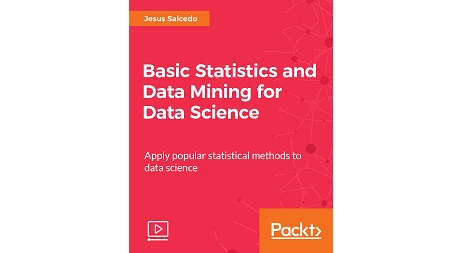
English | MP4 | AVC 1920×1080 | AAC 44KHz 2ch | 2h 58m | 577 MB
Enter the world of Statistics, Data Analysis and Data Science!
Data science is an ever-evolving field, with exponentially growing popularity. Data science includes techniques and theories extracted from the fields of statistics, computer science, and most importantly machine learning, databases, and visualization.
This video course consists of step-by-step introductions to analyze data and the basics of statistics. The first chapter focuses on the steps to analyze data and which summary statistics are relevant given the type of data you are summarizing. The second chapter continues by focusing on summarizing individual variables and specifically some of the reasons users need to summarize variables. This chapter also illustrates several procedures, such as how to run and interpret frequencies and how to create various graphs. The third chapter introduces the idea of inferential statistics, probability, and hypothesis testing.
The rest of the chapters show you how to perform and interpret the results of basic statistical analyses (chi-square, independent and paired sample t-tests, one-way ANOVA, post-hoc tests, and bivariate correlations) and graphical displays (clustered bar charts, error bar charts, and scatterplots). You will also learn when to use different statistical techniques, how to set up different analyses, and how to interpret the results.
What You Will Learn
- Get familiar with the basics of analyzing data
- Exploring the importance of summarizing individual variables
- Use inferential statistics
- Know when to perform the Chi-Square test
- Differentiate between independent and paired samples t-tests
- Understand when to use a one-way ANOVA and post-hoc tests
- Get well-versed with correlations
Table of Contents
01 The Course Overview
02 Basic Steps of Data Analysis
03 Measurement Level and Descriptive Statistics
04 Reasons for Summarizing Individual Variables
05 Obtaining Frequencies and Summary Statistics
06 Data Distributions
07 Visualizing Data
08 Hypothesis Testing and Probability
09 Statistical Outcomes
10 Chi-square Test Theory and Assumptions
11 Chi-square Test of Independence Example
12 Post-hoc Test Example
13 Clustered Bar Charts
14 Independent Samples T-Test – Theory and Assumptions
15 Independent Samples T-Test Example
16 Paired Samples T-Test – Theory and Assumptions
17 Paired Samples T-Test Example
18 T-Test Error Bar Charts
19 One-way ANOVA Theory and Assumptions
20 One-way ANOVA Example
21 Post-hoc Test Example
22 ANOVA Error Bar Charts
23 Pearson Correlation Coefficient Theory and Assumptions
24 Pearson Correlation Coefficient Example
25 Scatterplots
Resolve the captcha to access the links!